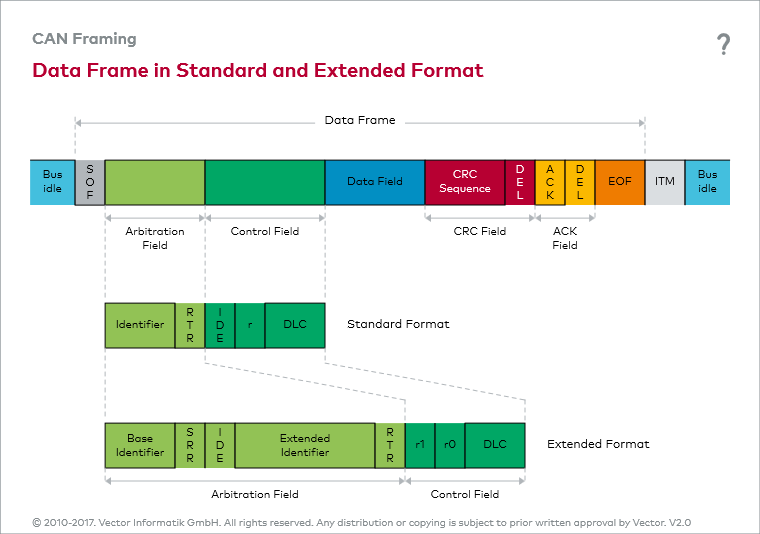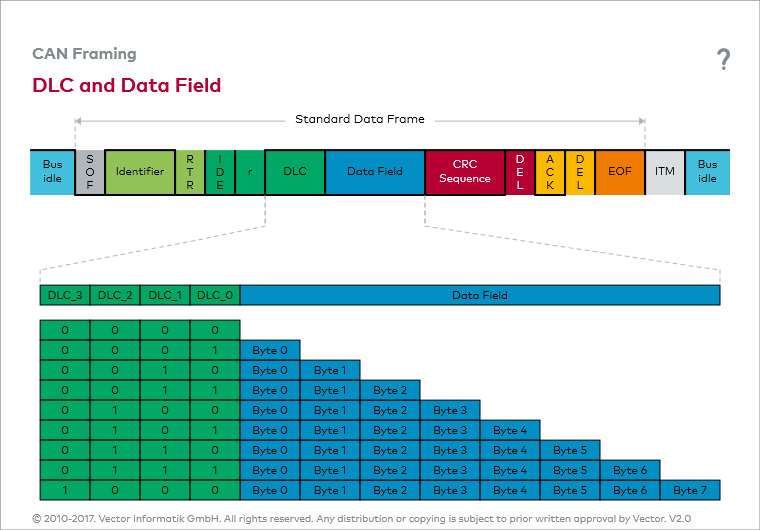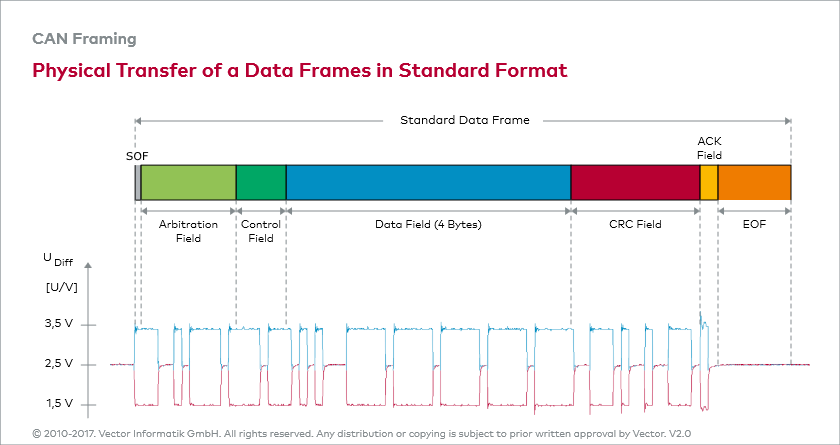- Overview
- 1. Introduction
- 2. CAN Communication
- 3. CAN Framing
- 4. CAN Bus Access
- 5. CAN Data Protection
-
6. CAN FD
- Motivation
- Advantages and Consequences
- New Types of Frames
- Details of a CAN FD Frame
- Distinguishing CAN from CAN FD Frames
- Compatibility of CAN and CAN FD Controllers
- Accelerated Transmission
- Indicating too many Errors
- Length of the Data Field
- More Data with the same Security
- Changed Rules for Bit Stuffing and CRC Calculation
Data Frame
Segments
Data frames assume a predominant role in a CAN network: They serve to transmit user data. A data frame is made up of many different components. Each individual component carries out an important task during transmission. Tasks to be performed are: Initiate and maintain synchronization between communication partners, establish the communication relationships defined in the communication matrix and transmit and protect the user data.
SOF
Transmission of a data frame begins with the start bit (Start of Frame — SOF). It is transmitted by the sender as a dominant level which produces a signal edge from the previous recessive (bus idle) level which is used to synchronize the entire network. In order for the receivers not to lose synchronism to the sender during transmission of the frame, they compare all recessive-to-dominant signal edges with their preset bit timing. In case of deviation, receivers re-synchronize by the amount of the relevant phase error (re-synchronization).
ID and RTR
Following the SOF is the identifier (ID). This sets the priority of the data frame, and together with the acceptance filtering it provides for sender-receiver relations in the CAN network that are defined in the communication matrix. Next comes the RTR bit (Remote Transmission Request). It is used by the sender to inform receivers of the frame type (data frame or remote frame). A dominant RTR bit indicates a data frame.
IDE
The IDE bit (Identifier Extension bit) which follows serves to distinguish between standard format and extended format. In standard format the identifier has 11 bits, and in extended format 29 bits. The figure “Data Frame in Standard and Extended Format” is available to study the two formats.
DLC
The DLC (Data Length Code) communicates the number of payload bytes to the receivers. The payload bytes are transported in the data field. A maximum of eight bytes can be transported in one data frame.
CRC and ACK
The payload is protected by a checksum using a cyclic redundancy check (CRC) which is ended by a delimiter bit. Based on the results of the CRC, the receivers acknowledge positively or negatively in the ACK slot (acknowledgement) which also is followed by a delimiter bit.
EOF
After this the transmission of a data frame is terminated by seven recessive bits (End Of Frame — EOF).



